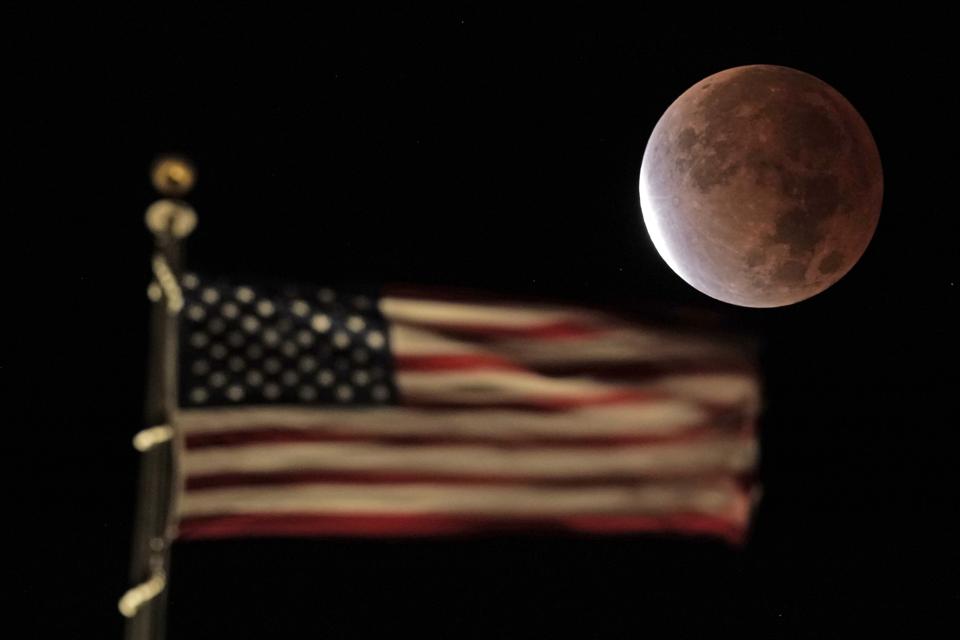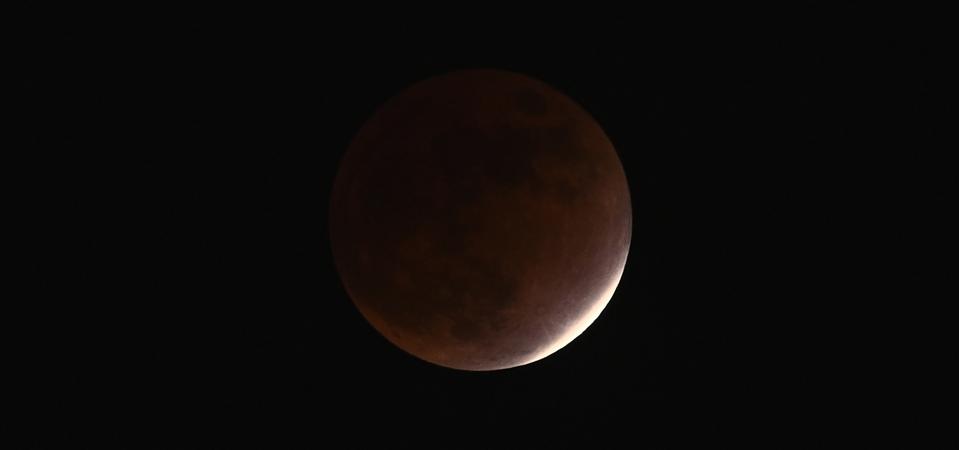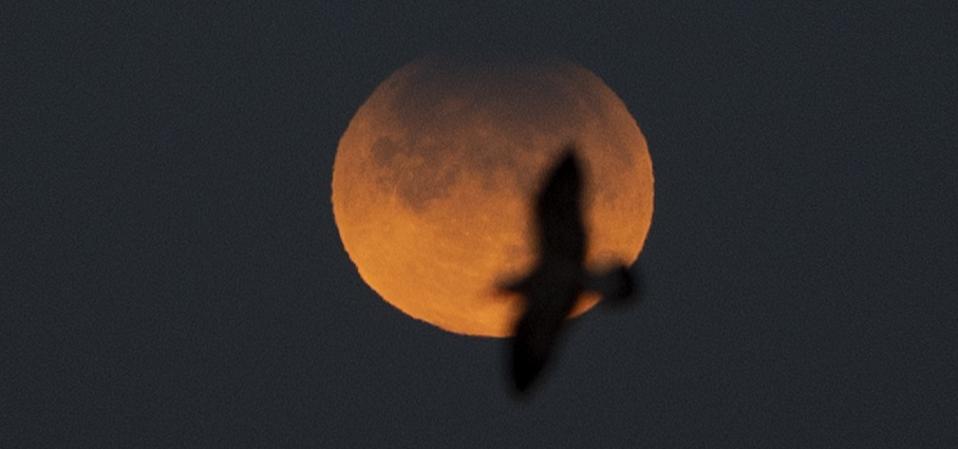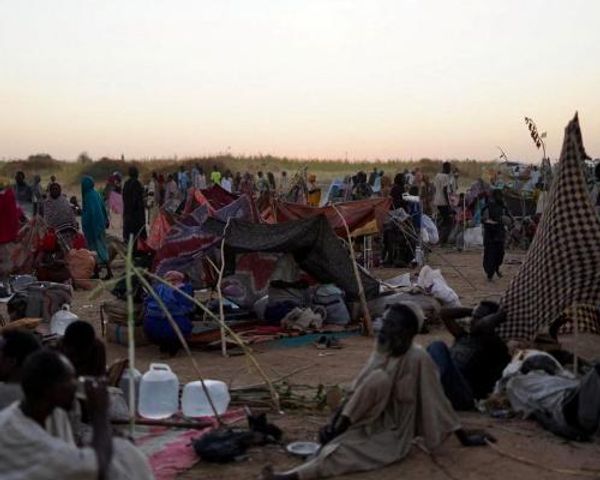
Did you see the “almost-total” eclipse of the Moon?
The early hours of November 19, 2021 saw the Sun, Earth and a full Moon form a near-perfect lineup in space—a “syzygy”—during which the Moon drifted into Earth’s mighty shadow in space to cause a partial lunar eclipse.

It was special because it was almost a total lunar eclipse—known colloquially as a “Blood Moon”—with 97.4% of the Moon’s surface turning a dark copper-ish reddish color for anyone up early enough to see it.
It was also special because it proved to be an especially dark lunar eclipse, with onlookers seeing brownish shades on the surface of the Moon.

Since even at the peak of the event the Moon was 2.6% lit by the Sun there was a silvery slither at the bottom, as seen from North America.
The strange celestial sight was seen by night owls and early risers across almost all of North America. The full “Beaver Moon” passed through Earth’s shadow —it’s umbra—after midnight on November 19 in all four main U.S. time zones.

For Hawai’i and Alaska, the event began before midnight. In South America the eclipse happened just before dawn while Australia saw a mostly eclipsed Moon at it rose. Northeastern Asia also saw the entire event, with many observing events staged in Tokyo.
The key sight was the Moon glowing a coppery red or burnt orange color, though perhaps with a brownish tinge. The colors of a “Blood Moon” are caused by the Earth’s atmosphere, which sent some scattered and bent sunlight onto the lunar surface.

As an extra bonus for astrophotographers the eclipsed Moon appeared a mere 6° from the Pleiades—also known as the Seven Sisters and M45—a stunning open cluster of blue stars in the constellation of Taurus.
A lunar eclipse occurs when a full Moon passes through Earth’s 870,000 miles/1.4 million km long shadow in space. They can only occur at full Moon.

What happened yesterday was a partial lunar eclipse, with almost all of the Moon moving through Earth’s shadow in space.
This partial “Blood Moon” also signalled the beginning of 2021’s second “eclipse season.” An eclipse season comes twice each year when the Sun appears to pass through one of the Moon’s nodes—the points on the Moon’s orbital path that intersects with the aptly-named “ecliptic” (the path of the Sun through our sky).

This current eclipse season will bring one more eclipse—a total solar eclipse—on December 4, 2021. However, that will be visible only to those who make the long journey down to Antarctica.
The next lunar eclipse will be on May 16, 2022, when Canada, the U.S. and South America will see a totally eclipsed “Blood Moon” glowing reddish for 84 minutes. Europe and Africa will also see some of the event at sunset.

There’s a second total lunar eclipse on November 8, 2022, when again a totally eclipsed Moon will be on show for 84 minutes—and again to North America, although Australia and southeast Asia will also get a good view.
However, after that there are no more total lunar eclipses until 2025.

The next full Moon is the full “Cold Moon,” which will occur on Saturday, December 18, 2021, at 11:37 P.M. EST. Named after the cold weather in December in the northern hemisphere, the “Cold Moon” will rise just a few nights before the solstice on Tuesday, December 21, 2021.
That’s why it’s also sometimes called the “Long Nights Moon” since it appears during the northern hemisphere’s longest nights of the year.
Wishing you clear skies and wide eyes.







